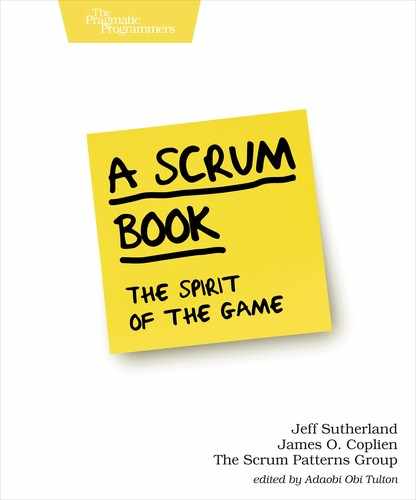A Quick Tour of the Book
This is probably not a book you will read cover to cover. We’re glad you’re starting with the introduction. A good next step might be to read the very first pattern, ¶1 The Spirit of the Game: it may help you ponder how high your aspirations should reach when applying these patterns. Then, you might take a day to skim the patterns in the book, reading just the boldface text, which we use to help you internalize how the pieces integrate into an overall concept. That’s why the boldface bits are there.
The book weaves together two intertwined narratives. The patterns are the heart of the book, and in some sense the rest of the text is secondary supporting material. In accordance with broad convention, each pattern has a number (see Book Notations, which follows), and the patterns appear in the book in numerical order. The order of the patterns within Chapter 2 and Chapter 3 reflect a typical order in which one might apply the patterns, the canonical sequence for applying them. We explored this in more detail in Patterns of Scrum. Patterns also refer to each other by number, and the links between them form a graph which reflects the structure of the pattern language that contains them. We have woven the second narrative into spaces between the patterns. It includes chapters such as this one that describe the book’s approach, philosophy, and history; a minimal pattern-based exposition of the Scrum Core in Chapter 1; and other small sections that clarify or amplify special topics. Many of these topics, while important to Scrum, are not patterns per se, but instead describe broad concepts or principles on which the patterns stand. So, for example, the section Notes on Velocity appears right before a group of patterns that focus on velocity. Also among these interludes you will find example sequences that describe how the patterns link to each other in an idealized order of application.
At the heart of the book are the two pattern languages in Chapters 2 and 3. Each of these pattern languages offers one perspective on the multiple forms cutting across your organization. Chapter 2 focuses on the roles, relationships, and gatherings of people, and Chapter 3 on the organization of the workflow. You may certainly pick and choose from both chapters as described earlier. Each pattern is numbered, and patterns refer to each other by pattern number rather than by page number, in accord with the convention that Alexander used in his work. After reading The Spirit of the Game, you might read the main sequences: the Product Organization Sequence, and the Value Stream Sequence. Those sequences will give you an overview of the Wholes that the pattern languages represent and may draw you into more deeply reading individual patterns that speak to you.
Chapter 4 talks about how to bring the pattern languages into your own space, and gives an example sequence (project language) to build a high-performing team.
This book builds on past work which itself contributed much to agile foundations, and which itself has a wealth of insight into making Scrum work. Rather than reiterating those patterns here, we refer to the original source. However, we want you to be able to recognize those patterns within yourself when you come across them, and we include short descriptions of each one to help jog your memory. Chapter 5 provides patlets (small, one-sentence pattern summaries) for patterns from other sources, particularly from Organizational Patterns of Agile Software Development [CH04]. The same chapter contains patlets for the patterns in this book—we tend to use it as an annotated topical index when we are seeking how to solve a particular problem.
